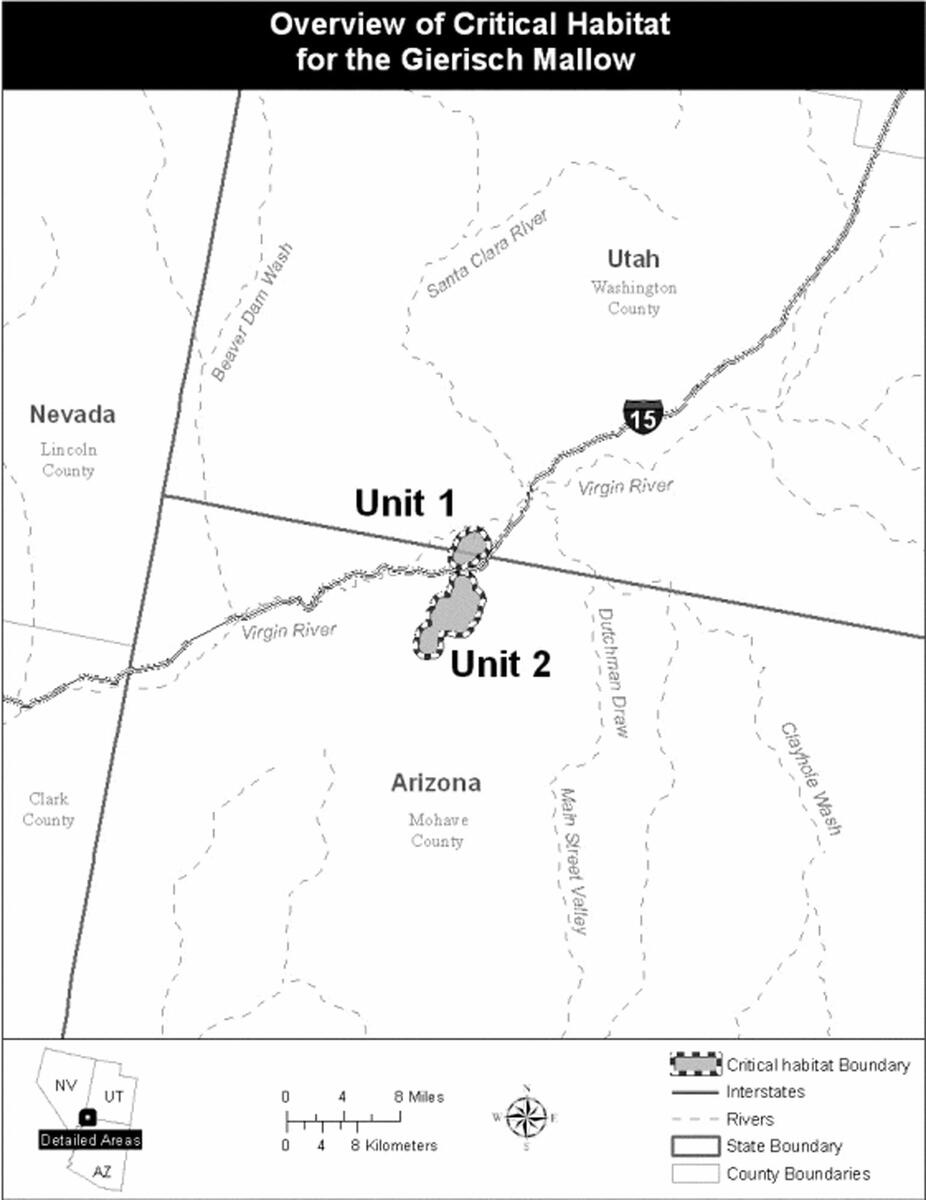Original post by Evan Bell, Cronkite News Service
WASHINGTON – The U.S. Fish and Wildlife Service declared the Gierisch mallow endangered Tuesday, and proposed more than 12,000 acres in Arizona and Utah as critical habitat for the desert wildflower.
The orange perennial flower is found only in Mohave County, Arizona, and Washington County, Utah, and can only grow in “gypsum soil” found in those counties.
But that soil is also the source of gypsum used to produce construction materials such as drywall. As construction picks up, increased gypsum mining could threaten the endangered flower‘s habitat, the government said, along with recreational activities on public lands and unauthorized use of off-road vehicles.
In addition to creating critical habitat for the plant, other measures called for in the government’s action include seed management, creating “managed plant reserves” and “limiting disturbances.”
All of the land involved belongs to either the U.S. Bureau of Land Management or the Arizona State Land Department.
“The ruling should not impact any legal authorized activity” on the land, said Brian Wooldridge, a biologist for the Fish and Wildlife’s Arizona Ecological Services.
But Washington County Commissioner Alan Gardner called the decision “very unfortunate.”
“BLM actually said the wildflower was doing fine or better,” Gardner said. He called it just an attempt by Fish and Wildlife to “shut the gypsum mining down.”
But environmental groups, which have been calling for years for the mallow’s protection, welcomed the news.
“We’re hopeful that this is going to save the plant from extinction,” said Taylor Jones, an endangered species advocate for the WildEarth Guardians. The advocacy group has been lobbying the government since 2007 to list the wildflower as an endangered species.
“We think that this is going to be the only way to protect this very small population from threats in the area,” Jones said.
The Federal Register notice announcing the decision concluded that, with an improving housing market, gypsum mining will make a return. There are two gypsum mines in the critical habitat area, one in operation and one that is currently shut down.
The government said such mining poses a “significant threat” to the species that could wipe out “46 percent” of the mallow’s habitat.
BLM has authorized expansion of the one operating mine, the Black Rock Gypsum Mine, into the flower’s habitat, but it could take years for that expansion to occur, the notice said.
“We work with land management agencies to determine if the project will have an adverse effect on the species and its habitat,” Wooldridge said.
But Jones said the Endangered Species Act is often too “flexible,” often blocking only about “1 percent” of activity to protect a listed species. The prospect of mining and other activity in the flower’s habitat concerns activists.
“When you have a really small population that is being hemmed in, bounded and under pressure, the more likely it is that an event will wipe it out,” Jones said.
[caption id=“attachment_174” align=“aligncenter” width=“490”]  The Gierisch mallow, which is found only in Mohave County, Arizona, and Washington County, Utah, has been declared endangered by federal officials, who want to designate 12,000 acres as critical habitat for the desert flower.Details on the endangered Gierisch mallow from the U.S. Fish and Wildlife Service:
The Gierisch mallow, which is found only in Mohave County, Arizona, and Washington County, Utah, has been declared endangered by federal officials, who want to designate 12,000 acres as critical habitat for the desert flower.Details on the endangered Gierisch mallow from the U.S. Fish and Wildlife Service:
- Description: A flowering perennial of the mallow family. Multiple flowers are orange on dark-red or purple woody stems that grow 1.4 to 3.4 feet tall.
- Habitat: Found only on gypsum outcrops in northern Mohave County, Arizona, and adjacent Washington County, Utah, at elevations of about 3,500 feet.
- Reasons for decline: Mining operations and unauthorized off-roading have damaged habitat; additionally, trash dumping and illegal target shooting have had an impact.
[/caption]
